
- January 27, 2024 | Breitling Watches For Pilots
- December 22, 2023 | Mosquito Air Kit Helicopter Assembly Manual
- December 22, 2023 | Mosquito Air Kit Helicopter Operators Manual
- August 13, 2020 | Rotorway Exec Kit Helicopter 1987
- August 13, 2020 | Chadwick Helicopters C-122

Safari 600: A well-proven helicopter to build yourself
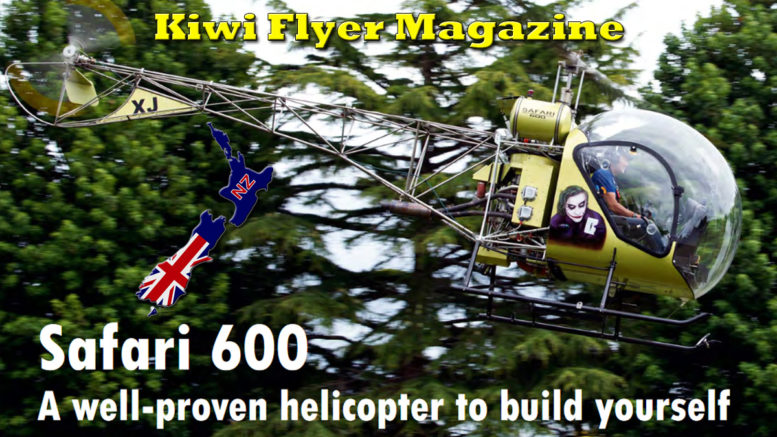
Posted By: redback February 27, 2019
COURTESY: KiwiFlyer Magazine
Magazine of the New Zealand Aviation Community
SOURCE: Issue 50 – 2017 #1
SUBSCRIBE: http://www.kiwiflyer.co.nz/
CREDITS: Michael Norton – Editor | Publisher KiwiFlyer Magazine
Flight Review
There’s a new, NZ, version of the Safari helicopter about town. And it’s much nicer to fly. About three years ago, KiwiFlyer sampled the previous edition of Bruce Belfield’s home-built Safari helicopter for a feature article in Issue 33.
For a variety of reasons, supported by second and third opinions, we concluded it was probably the pick of the rotary home-builts available in the recreational aviation market. If there was a niggle at that time, it was our perception of a heavy control feel – which we likened to an R44 with the hydraulics off.
You adjusted to it after a while, but the initial flight for pilots current in certified light helicopters would probably involve a degree of over-controlling in response to the friction and feedback present within the Safari’s systems of then. And now? Very much better.
That’s not just KiwiFlyer’s view after a brief sortie around Bruce’s patch at Te Awamutu either. Other CPLs who have tried the new version concur.
There are 12 CHR Safari helicopters on the New Zealand register. Produced as a kit-set by Florida company CHR International, the Safari has the outward appearance of a scaled down Bell 47. Indeed when first developed by Canadian Home Rotors, the aircraft was named the Baby Belle.
It was later changed to Safari and subsequently in 2009 CHR International acquired the business and moved it to Florida. Testament to the design of the Safari is the number of hours commonly flown on them. Several of the New Zealand examples have many hundreds of hours on their HOBBS.
All too often home-built helicopters change hands with very few hours on the clock, in main due to their owner/builders discovering that flying them wasn’t quite the good experience they were expecting.
LEFT: Brand new Safari 400 being test flown by Bruce. RIGHT: Main rotor blades are composite, made in the US.
That’s not the case with the Safari helicopter, whose owners frequently talk of adventures into mountains and bush on hunting, fishing and holiday trips. One of the confidence inspiring aspects of the Safari is its rugged and traditional design.
The helicopter air frame is of welded steel, the engine is a Lycoming, and everything is on show for inspection. There’s also plenty of room for two people in the cabin, a decent useful load and good power reserves.
Bruce Belfield became a distributor for the helicopter company after acquiring his kit in 1998, forming South Pacific Home Rotors in 2002. A fitter/turner and machinist by trade, his skills were a perfect match for the amateur-built aircraft category the Safari fits in to.
Those skills have also been put to good use for subsequent owner/builders with numerous improvements to the design originating from Bruce’s workshop and now distributed to owners around the world as well as the United States factory.
Safari 600 Specifications and Performance
Powered by a Lycoming O-360, the standard factory Safari 400 will cruise at 74kts, with a VNE of 87kts or 100mph. A typical ship weighs around 1000lbs empty and with a MAUW of 1650lbs, useful load is in the order of 650lbs. Climb performance is 1000 feet per minute to a ceiling of 10,000 feet.
The twin fuel tanks hold a total of 106 liters. IGE hover limits are quoted as 7000 feet and OGE as 5000 feet. The 26ft diameter main rotor is of composite construction and the tail rotor with a 4 foot diameter is made from strong and light weight titanium.
South Pacific Home Rotors
Bruce Belfield’s original Safari 400 was the first-of-type to fly in New Zealand, back in the year 2000 when it also deservedly gathered up several home-building awards from the local sport aviation scene.
Over the years since, Bruce has worked extensively to support other builders in New Zealand as well as to make numerous improvements to the helicopter’s design and flight characteristics, several of which have been incorporated by the factory into their standard kit – one example being titanium tail rotor blades.
LEFT: Everywhere you look, craftsmanship is outstanding. RIGHT: Proud new owner Colin Wade, with Bruce.
Another improvement first fitted to the helicopter by Bruce and then adopted by the factory has been an electronic governor system. Yet another is his Kiwi-Pod luggage system.
Now his latest personal Safari incorporates so many ‘Bruce version’ improvements that it has become a step change from the standard factory offering. Bruce has thus unofficially ‘named’ it the Safari 600. More on that later.
Throughout the course of his work on the Safari, Bruce has acquired an international reputation as the go-to person for ‘setting up’ the helicopter. In that regard he’s recently returned from a few weeks in Costa Rica working for an owner there, and he often travels to Australia to support owners in Sydney.
Several of Bruce’s ‘enhancements’ are in regular demand by other new and existing owners throughout the world, his exhaust and inlet manifold systems being a common example.Bruce has also regularly attended Oshkosh and Sun & Fun as a guest of the factory to meet prospective customers and act as a factory demonstration pilot for them.
Safari 600 Helicopter Kit Options
The Safari helicopter kit fits into the amateur-built category, so if you do take the option to build it yourself from a basic kit, the 51% rule means that you can also maintain it yourself afterwards.
The most popular option in Australasia is the ‘Down Under’ Starter Kit, comprising a majority of the basic components, but leaving it to the owner to sort their own engine, cabin fit-out and instruments.
In the kit are: Fabricated cabin frame and tail boom, tail rotor driveshaft, fuel tanks, basic control package, engine/rotor tachometer, rotor head and blades, main transmission, a conversion kit to mount the aircraft certified engine vertically, and tail rotor assembly and blades.
The next option up is the Safari 400 kit which includes the O-360 engine, shroud and exhaust, welded fuselage with sheet metal installed, powder coated frame and mounted bubble, leather seats and carpet, instruments and pod, governor, trim and frictions, and all the necessary small parts and raw materials to complete your aircraft.
A ready-to fly option is also available which Bruce can build for you at his Te Awamutu base, where he has support available from Central Aero Engineering at Hamilton for any engineering supervision required.
Bruce says that most of his New Zealand customers typically acquire a starter kit including frame and bubble. Then they source the engine and instruments from a timed-out R22 (or a wrecked one). Although the fabrication required to complete a kit is all uncomplicated, there is a lot of it to do.
No welding is required in the Down Under kit . Bruce also says that all parts supplied are very accurately produced and fit together as they should, thanks to extensive investment in jigging and CNC production at the factory.
He says that an honest assessment of the time required to complete a Down Under kit is 1000 hours, this including the ‘thinking’ time and being easily achievable by a builder with basic skills.Any parts can be requested ready-made from the factory or via Bruce and he says there is a long list of options to make the job easier if desired.
New Zealand customers of course have a major advantage to hand in that Bruce is here with a demonstration aircraft, a wealth of hands-on experience for building, setting up, and flying the type, and the capability to assist the build process from start to finish.
The Safari 600
Bruce’s latest edition of the Safari helicopter build is not an official factory version, but if customers wish then he can fabricate the same modifications for their aircraft.
In addition to the list of ‘Bruce’ improvements that have become standard (or nearly so) Safari fitment, the ‘600’ has an extensively reworked control system. Working closely with Paul Waterhouse at Central Aero Engineering, Bruce has made numerous small changes that together accrue towards making flying the aircraft an altogether better experience.
Paul currently maintains five Safaris on behalf of their owners and says, “it wasn’t a secret that the control characteristics haven’t been perfect. The cyclic and collective forces were quite heavy and prone to leading new Safari pilots towards over-controlling.”
Paul and Bruce did “a lot of analysis and staring at other two-bladed rotor heads,” an exercise that culminated in changes to pitch link arm alignment and various other components – particularly also with a view to managing friction in the control system. In Paul’s words, “it’s pretty close to right now” .
Paul also says, “I’ve got no hesitation at all to fly in one.” Paul’s latter statement is qualified by him adding that there are very few home-built helicopters that achieve an acceptable standard for him to fly in.
Other design changes include canting the main rotor transmission forward slightly, an all-titanium tailboom – for strength and weight savings, new pedal linkages which are more positive in action, a widening of the internal frame leading to more cabin room, angling the cabin floor to be flat at cruise speed, a transmission oil cooler which now provides for an indefinite hover time, and a new collective actuator system which operates in descent at <18” MAP to help prevent the collective wanting to rise (a previous Safari niggle).
Compared to the standard model, the Safari 600 is 50 lb lighter. Bruce says that one-up, it climbs easily at 1200 fpm.
Flight Experience
As well as a brief fly of the Safari 600 ourselves, KiwiFlyer also spoke with local commercial pilot Nick Lane (4 years and approaching 1000 hours on his CPL), who is familiar with both the Safari 400 and new 600 versions.
A pre-flight is straight forward, with virtually everything you might want to inspect being clearly on show right in front of you. Climbing aboard is equally straight forward so long as you remember to put your head in the bubble and follow with your body – it simply won’t work the other way around unless you’re less than four feet tall.
Seats are very comfortable, there’s a heap of elbow room, and leg room is equally generous. I’m a touch over 6 foot and have always found the pedal position in Robinson R22s or Hughes H300s right on my comfort limit – and occasionally beyond it, resulting in cramping muscles which aren’t conducive to hovering a helicopter in a gusty crosswind. Not so in the Safari.
Bruce’s floor and pedal modifications suited me very well.Checks are all standard practice and the venerable Lycoming roars into life. As an aside I did also observe Bruce flying from the ground – and this is a noticeably quiet helicopter.
The noise footprint is unlikely to ever bother neighbors.Bruce flew a circuit to reacquaint me, then it was my turn. Three years ago, that was a bit of a humbling experience and I’ll admit it took me the best part of an hour to get to grips with the aircraft.
The difference this time was significant. In the same way that others who have flown the ‘600’ have found, a few minutes was enough. That’s mainly because the controls are much lighter and better balanced now. It’s a lot more like flying an R22 than previously.
Vibration levels and stick shake all seemed low too, suggesting a well ‘sorted’ machine. We depart for a local scenic and I also notice how much nicer the aircraft feels to just ‘fly around in’ .
Bruce says that’s due to the helicopter mast adjustments and also in part to his tilted floor. Flying ‘on the numbers’ is easy and in the light breeze we’re flying in, Bruce can readily trim the helicopter for hands-off flight if he wishes.
Confirming my perceptions in a later discussion, Nick Lane observed that it ‘wants’ to fly at 60 kts now instead of 40 kts previously whereupon it always felt like you were forcing it to go faster.
Nick says in his view the controls are “much improved” and although, like many aircraft it has its idiosyncrasies, “once you’ve got a feel for it, it flies nicely.” He says to Bruce, via our discussion, “The way it is now is good. Leave it alone.”
In Nick’s view, and mine, someone with R22 experience and Robinson Safety Course currency, would transition to the Safari 600 quite well. Being in the experimental category, pilots require a PPL(H) to fly the Safari.
Most owners either have a license or acquire one in an R22 whilst building their aircraft. However Bruce says that pending a willing Flight Examiner (currently in the pipeline), it will be possible to undertake all one’s training in the Safari if desired.
For more information on this kit helicopter
One final testament to these aircraft, worthy of mention, is that full-cover insurance is now available with a reasonable excess and premium equal to or better than what most R22 helicopter owners would receive.
To find out more, contact Bruce Belfield at South Pacific Home Rotors on 027 696 5159 or 07 871 5699, by email: [email protected] or visit www.safarinz.com
The factory website is www.safarihelicopter.com
New owner profile: Colin Wade
Our visit to Te Awamutu coincided with an opportunity to meet new Safari owner Colin Wade, who was enjoying some time in his brand new helicopter with Bruce. A Cirrus SR20 owner/pilot, Colin is yet to commence his PPL(H) and plans to use the Safari for his training. We asked Colin about the motivation behind his new acquisition.
It was quickly obvious he is a passionate aviator, first flying with Max Clear and Bantams at Te Kowhai, before stepping up to a Sky Arrow, then Pioneer 300 and then a PPL in his Cirrus which he regularly flies between Te Kowhai, Pauanui and Great Barrier.
Colin has long been an aviation enthusiast and this year will attend Oshkosh for the 15th time, traveling (as always) on a Gaye Pardy tour which he and wife Sue have often helped run for Gaye.
It was at Oshkosh that Colin first met Bruce (when he was demonstrating the factory machine there). Colin says he went for a couple of flights and was hooked, telling Bruce to call him when he got home.
Bruce later landed his Safari at Colin’s front door and the deal was done, with Colin observing that Bruce’s workmanship was exceptionally good and confidence inspiring (KiwiFlyer agrees). Colin’s aircraft has been built up by Bruce and Colin over the last 18 months and has just had the mandatory 40 hours of test flying finished off by Bruce.
Colin says the Safari suited him very well with its manageable maintenance costs, decent useful load and power in reserve, and that he’s looking forward to a lot of local flying and being able to drop in on rural friends.
Congratulations on the aircraft Colin. It looks outstanding.
LEFT: All Safaris are fitted with NZ made titanium blades. MIDDLE: Bruce is experimenting with the adjustable airfoil. RIGHT: Very nicely designed and fabricated panel.

Related Articles
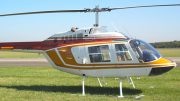
Helicopter Historical Articles
History of Bell Helicopters
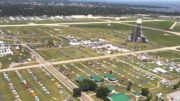
Cobra Helicopters
1991 Oshkosh Report Reveals Cobra Predator Helicopter Pictures
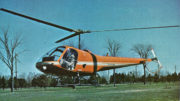
A Helicopter In Every Garage
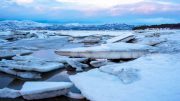
Helicopter Adventure Articles
Safari Helicopter Emergency Mercy Flight
Be the first to comment on "safari 600: a well-proven helicopter to build yourself", leave a comment cancel reply.
Your email address will not be published.
SAFARI 400 Flight Ready
Safari 400 flight ready helicopter.
If you do not have the time or inclination to build a Safari for yourself, let us custom build the helicopter of your dreams!
Starting with the “ingredients” of the SAFARI kit, a Flight Ready SAFARI can be customized to your specifications including paint, interior, engine, avionics and accessories to create a helicopter that is uniquely yours. Finished at the level of quality you would expect from the producers of the Safari Complete Kit, your new Safari will be flight tested and truly “Ready for Fun”.
2017 Ready to Fly Price Sheet
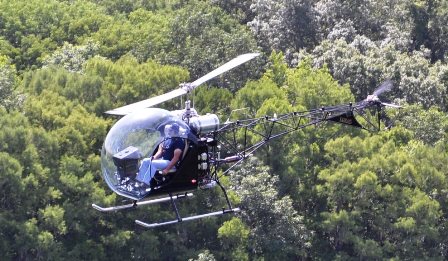
- Flight Reports
- Builder Spotlight
- Designer’s Notebook
- Customer Service
- Reset Password
- Guidelines for Writers
- Advertise with Kitplanes
- Industry News
- Kneeboard Notes
- Homebuilder’s Portal
- Completions
- Aircraft Buyer’s Guide
- Buying a Used Homebuilt
- Sign in / Join
- Free Newsletter
- Give a Gift

Safari 500 at Sun 'n Fun
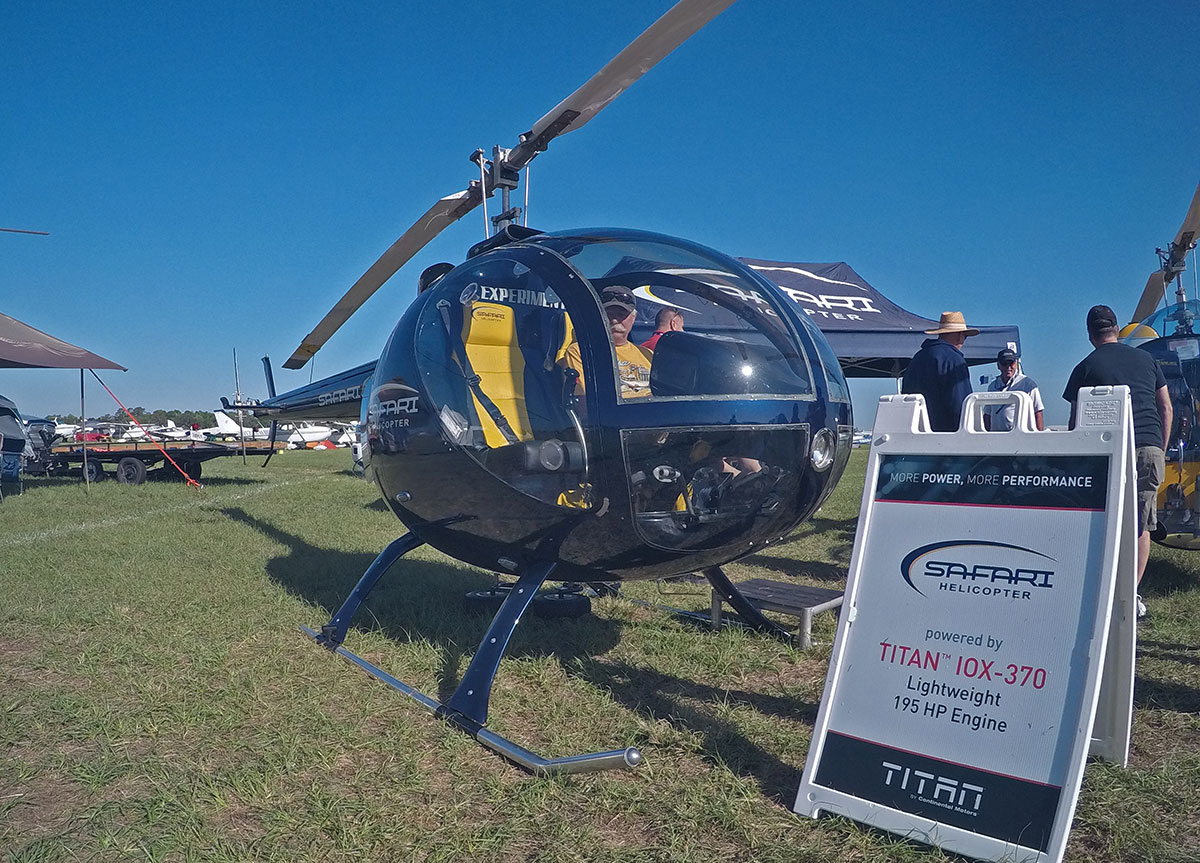
At Sun ‘n Fun I had the opportunity to meet with Bobby and Delane Baker, the owners of Safari Helicopters . The Safari Helicopter line has a long history dating back to 1954–started by Harold “Pop” Emigh and the original Commuter which evolved into the Commuter II. The rights were bought by Murray Sweet and production was taken to Canada under the ‘Canadian Home Rotors’ brand name. A machinist by trade Murray made many evolutionary improvements to the helicopter and took it to Oshkosh in 1995. Due to the visual similarities with a Bell-47 the type became known as the “Baby Belle” but was later renamed the Safari.
In 2001 production was moved to Florida where Bobby Baker, an A&P became involved. Bobby traded work on the helicopters for flight training. In 2009 Canadian Home Rotors wanted to end their involvement at which time Bobby and Delane bought the company. Upon taking over they began an extensive evaluation of the state of the helicopter and improvement program. Their focus was to improve the quality and safety of the design. One example is the tracing of raw materials through production into serialization of components. Improving production tolerances allow parts to be interchangeable. Another example is the work that has been done on improving the safety culture of the company by encouraging open reporting of problems and being open to suggestions for improvement.
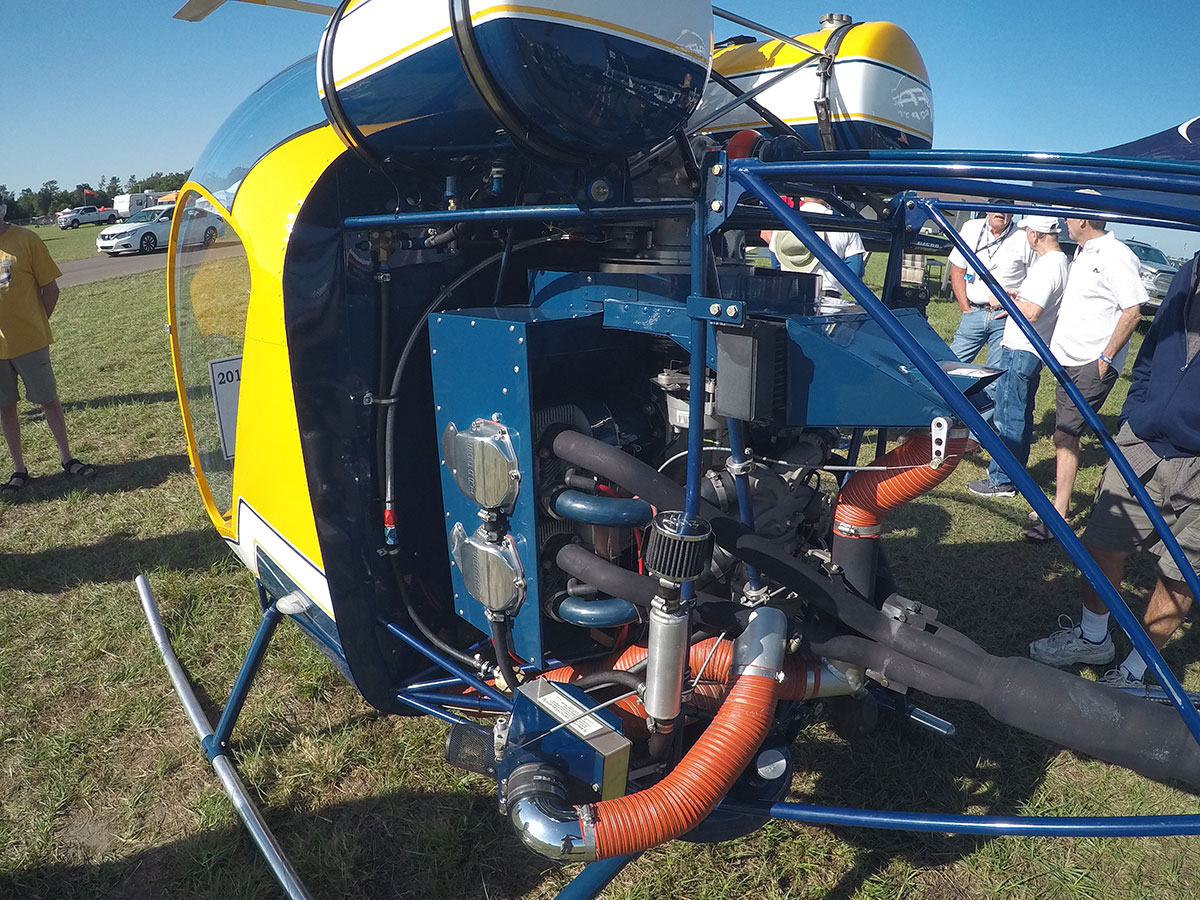
The driveline of the Safari resembles larger helicopters. Transmission housings are cast, x-rayed and then machined. Main and tail rotor transmission spindles are machined from billet titanium in-house to exacting tolerances. The rotor blades are composite with an aluminum spar and a brass rod to add inertia. The blades are finished with gelcoat and then balanced as a set. The Safari is powered by a Lycoming (or clone) that runs at 2750 RPM which is reduced by the transmission to 500 RPM at the main rotor. A nice feature for a helicopter in this class is a main rotor governor (a stepper motor that adjusts the throttle position to keep the main rotor speed constant.
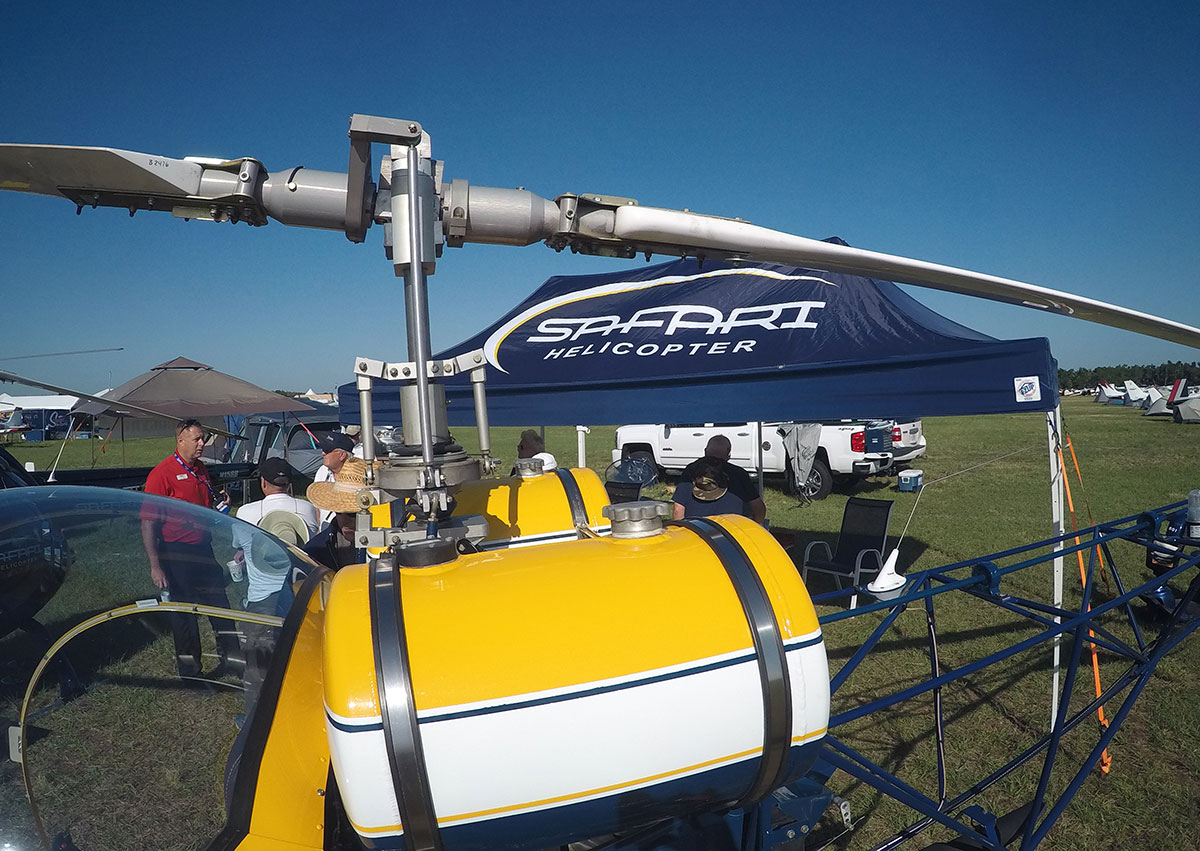
Big news for Safari Helicopters is the development of its new model 500. Based on the dynamic components of the current model it introduces a new fuselage and tailboom designed in SolidWorks. This is designed to improve performance and aesthetics through better aerodynamics and reduced weight. External engineering support has been used to analyze the new structure for strength and vibration.
Bobby was kept busy flying builders and prospective customers during operating hours from the ultralight grass strip. I was happy to be able to experience the Safari in a short 5-minute flight. The first thing you notice in a Safari is the expansive field of view. With doors off, there are essentially no obstructions, which makes flight at lower levels very enjoyable. There was plenty of leg and head room for my 6′ frame.
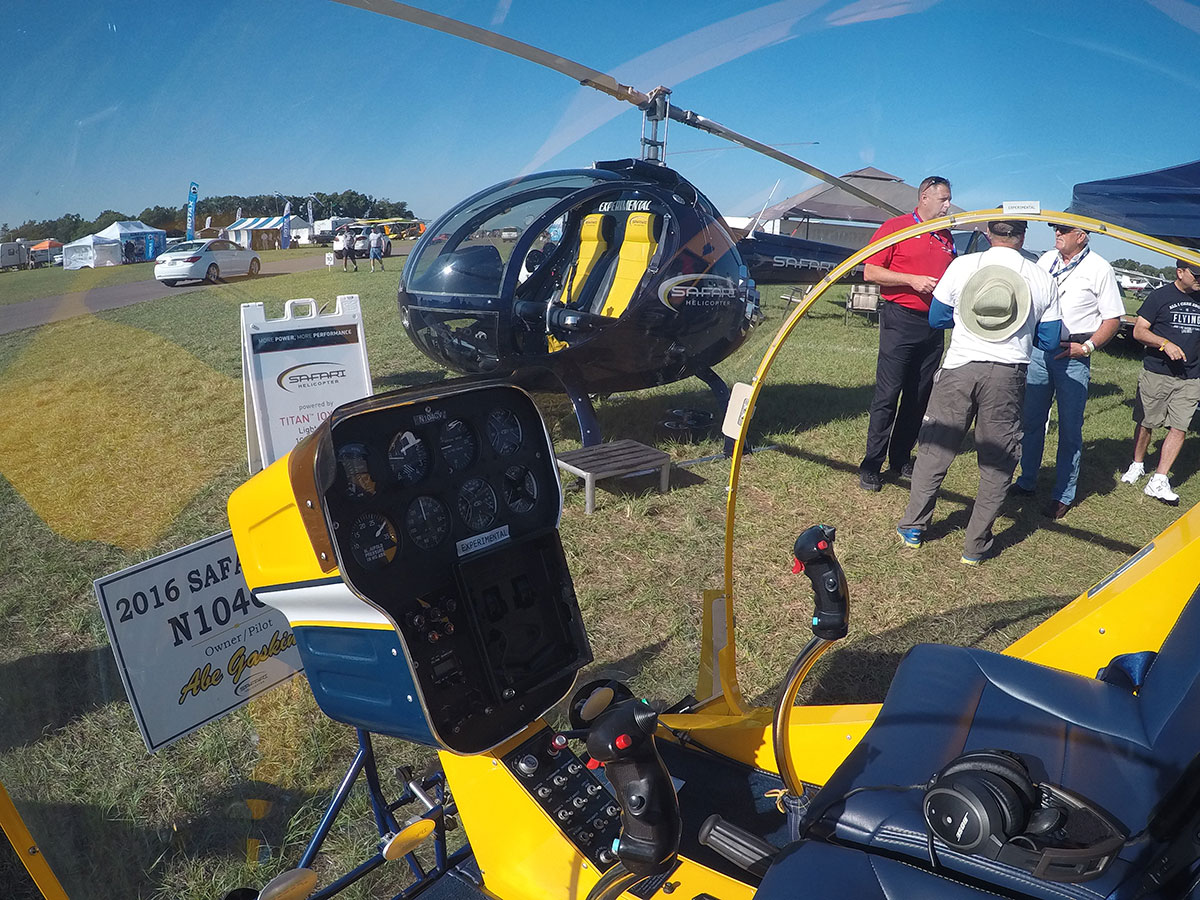
A central instrument panel has room for all necessary VFR instruments. Hovering in ground effect required around 24″ MAP, leaving sufficient margin for a relatively brisk takeoff acceleration. Once in level flight a power setting of 19″ MAP resulted in 60 mph indicated. When moving the collective the governor made small corresponding changes in throttle position to keep the rotor RPM constant, with no pilot inputs required. The Safari does not have hydraulically boosted controls, but it is fitted with a cyclic trim system to allow the pilot to relieve forces. The concept, forces and control vibration were like an MD 500.
Overall it was an enjoyable flight and the Safari presented as a very well manufactured small kit helicopter in a market with relatively few offerings. If you are in the market for a solid 2 place kit helicopter the Safari should definitely be on your short list.
RELATED ARTICLES MORE FROM AUTHOR
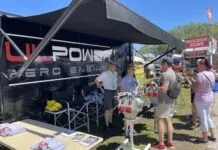
ULPower Tempts Builders With “Shirts for a Snap” Micro Event
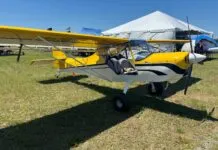
Silverlight Recon
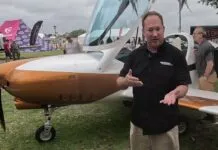
Rotax Power, Lots of Speed: The Retractable-Gear TL Sparker Debuts at Sun ‘n Fun 2024
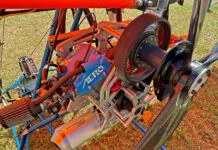
Aero 1000 Engine
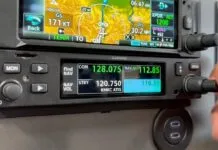
Garmin’s New VHF Radios
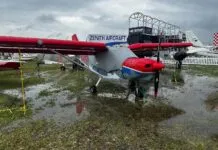
The Sun ‘n Fun Quick Rinse
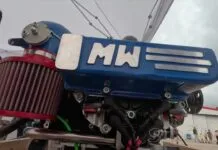
What You Should Know About the MWFly Engines from Italy
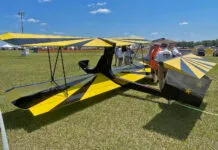
I have private endorsement for fixed wing, and fly regularly, would give my soul to fly chopper. To bad I don’t have the Money tree required to pursue this love.

LEAVE A REPLY Cancel reply
Save my name, email, and website in this browser for the next time I comment.
This site uses Akismet to reduce spam. Learn how your comment data is processed .
In Case You Missed it

Dare To Be Bare
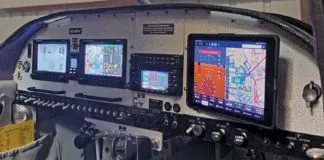
Wi-Fi Enabled
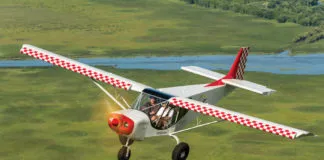
Super Duty!
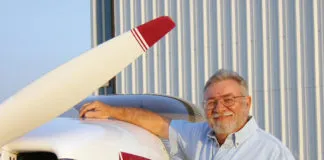
Ask the DAR
- Privacy Policy
Stay Connected. Stay Informed.
- EAA AirVenture Oshkosh
- News & Multimedia
The Route to Rotors at Osh: Go on Safari
Kit copter company shows low-cost path to vertical lift, by james wynbrandt.
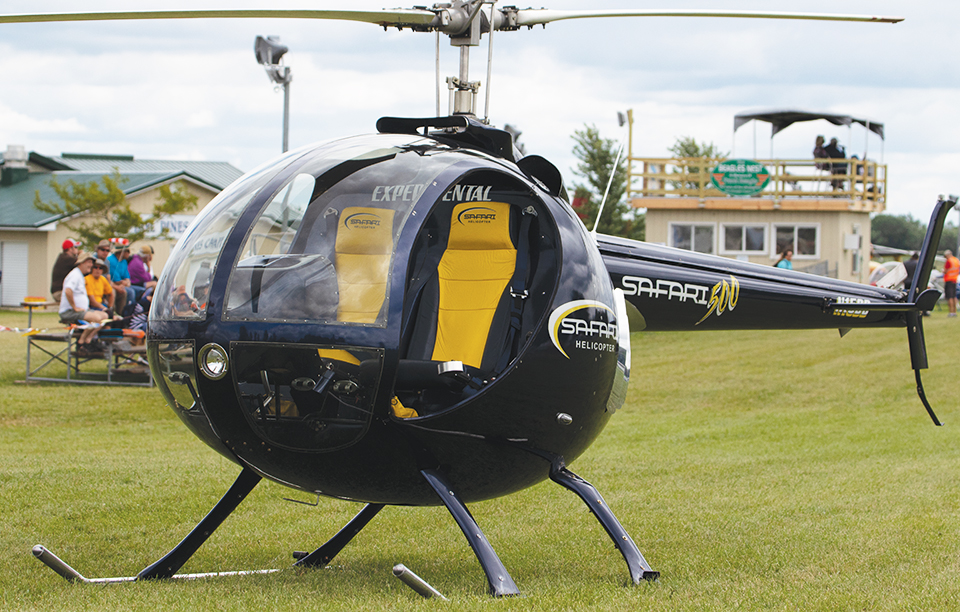
Recent Articles
April 18, 2024
April 04, 2024
March 21, 2024
March 07, 2024
July 27, 2018 - Many fixed-wing pilots view rotorcraft as difficult to fly and expensive to own and operate, but Safari Helicopter is working to shatter both assumptions at EAA AirVenture Oshkosh 2018 with the display of its Safari 400 and Safari 500 kitbuilt helicopters.
In business under a succession of names for some 60 years, Bobby and Delane Baker bought Safari Helicopter (Ultralight/Rotorcraft Display, Booth 934) in 2009, and “it’s been a hoot ever since,” Bobby said.
The experimental two-place rotorcraft are powered by a 180-hp Lycoming O-360 engine, their frames are 4130 chromoly steel tubing, and cabin shells are carbon fiber. The drive train is gear driven (no belts), the main shaft and spindle are titanium, and the blades are composite carbon fiber and extruded aluminum.
“It’s as close to certified as we can get without being certified,” Bobby said. Customers all over the world use them for “mustering cattle, to take pictures out of, to hunt, all kinds of stuff,” he said.
The kits include the engine, leather seats, carpet, steam gauge instruments, and switches.
“You can put the copter together and go fly and not spend one dime more,” Bobby said. Options for a full glass cockpit and full IFR package are available. “You can get anything you want,” he added, and that includes attachments for a spray system, a cargo hook, floats, side pods, “snow shoes,” and a trailer for ground transport.
With its large bubble canopy over the cabin, the 400 looks like a small Bell 47, while the soon-to-be-available 500, announced two years ago and featuring a carbon fiber tail boom, resembles a Hughes 500. Safari has 11 of the 500 models on order and is taking $1,000 deposits for delivery positions. “When it comes to your slot, if you back out, we’ll give you your $1,000 back,” Bobby said.
Build time for the 400 is about 450 hours, and for the 500 about 450 to 500 hours. Reaction to the products at this year’s show is “better than I’ve seen it since 2008,” he said. “I sold two on Monday, a 500 and 400.”
The Safari 400 kit costs $142,800, and the company is offering the Safari 500 for the same price at the fly-in, but “after the show it’s going up considerably.”
For the next phase of expansion, the Georgia company is “looking for full-service dealers knowledgeable about helicopters [that are] not only willing to sell, but support them as well,” Delane said.
Whether interested in buying or representing the company, visitors can see the Safaris fly at the Ultralight/Rotorcraft Display between 11:30 a.m. and 2:30 p.m. daily during the fly-in.

Cost To Buy a Helicopter: 15 Most Popular Models
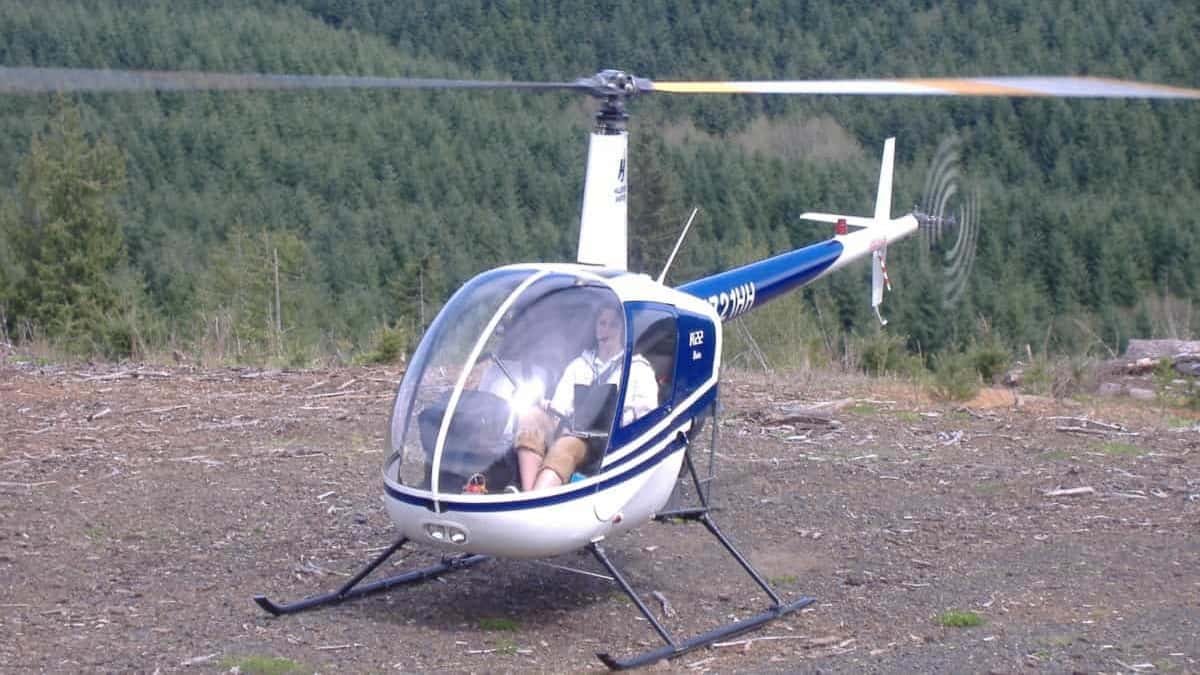
Helicopters are known to be an expensive vehicle that only the rich & famous or the world’s military and government agencies can afford to buy and fly. You may be surprised to know that there are helicopters on the cheaper end of the scale that make them available to those without deep pockets.
The average used helicopter can be purchased for $1.5M but many used helicopters can be purchased from as little as $50,000. A helicopter can range from a $50,000 home-build, single-seat, kit up to a $30M ultimate luxury helicopter that even comes with a bathroom.
There is such a huge range in helicopter prices for both new and used helicopters that there is a helicopter for every budget. The bigger and newer the helicopter, the more it is going to cost.
Here is a typical pricing scale for 15 of the world’s most popular civilian helicopters:
What Effects The Cost of Buying a Helicopter?
Helicopters are a complex machine with many precision parts. Most of these parts have a lifetime limit to them. The more life there is on each part, the more valuable it is. The cumulative cost for these parts and the availability of the helicopter type dictate the purchase cost of a used helicopter.
A cheaper helicopter may seem like a great deal, but when the component times are looked into, the buyer may soon realize that a major component like an engine or main transmission may be coming up for overhaul soon and the replacement cost of that item would soon make the ‘Deal’ not very good.
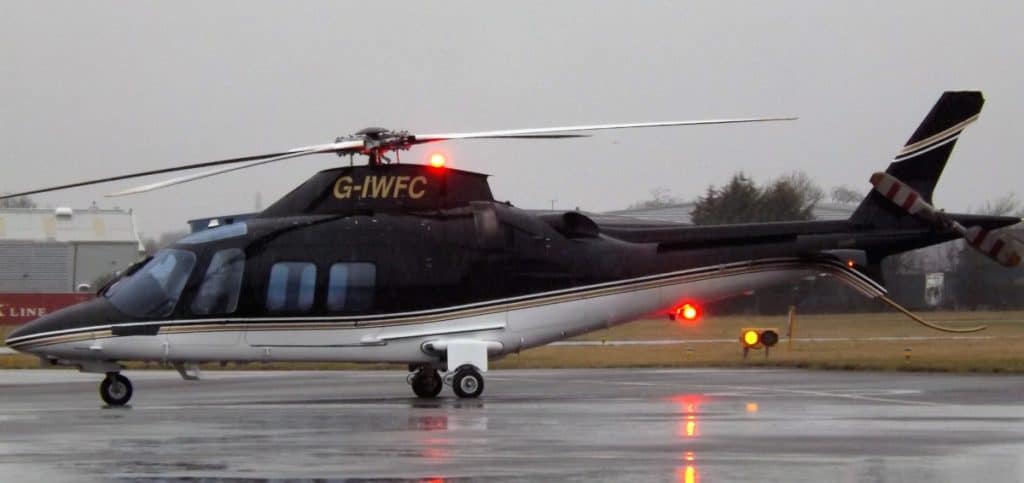
When there is an abundance of a certain helicopter in the market there is a lot of competition to pick from which drops the price because owners who want to sell need the aircraft off their hands. Bargains can be found and deals can be struck when there are lots of that model on the market. When the market is dry, then sellers can use this opportunity to create bidding wars which keeps the prices high.

Join My Newsletter & Get Great Tips, Information and Experiences To Help You Become a Superb Pilot!
- Wanting To Become A Pilot
- Student Pilot
- Aready A Pilot
- Aviation Enthusiast
- Money Saving Course
When looking to buy a new helicopter the manufacturer will set the base model price and then list dozens, if not hundreds of optional extras that the purchaser can pick from to be fitted onto the machine. By doing this it allows the manufacturer to adjust each airframe to suit the many different roles that helicopter type can fulfill.
For Example: An Airbus H125 Astar can be configured for :
- VIP & Luxury Charter
- Police & Security
- Medivac & Search and Rescue
Learn More … Try These Articles: * Buying a Helicopter? Which is the Best? * Helicopters: Why Are They So Expensive!?
What Is The World’s Cheapest Helicopter?
The cheapest DIY kit helicopter you can buy is the Helicycle for around $67,000. It is a single-seat, gas turbine-powered helicopter. The cheapest factory-built helicopter is the Composite-FX XE at $51,000. This is a single-seat, carburated piston engine helicopter.
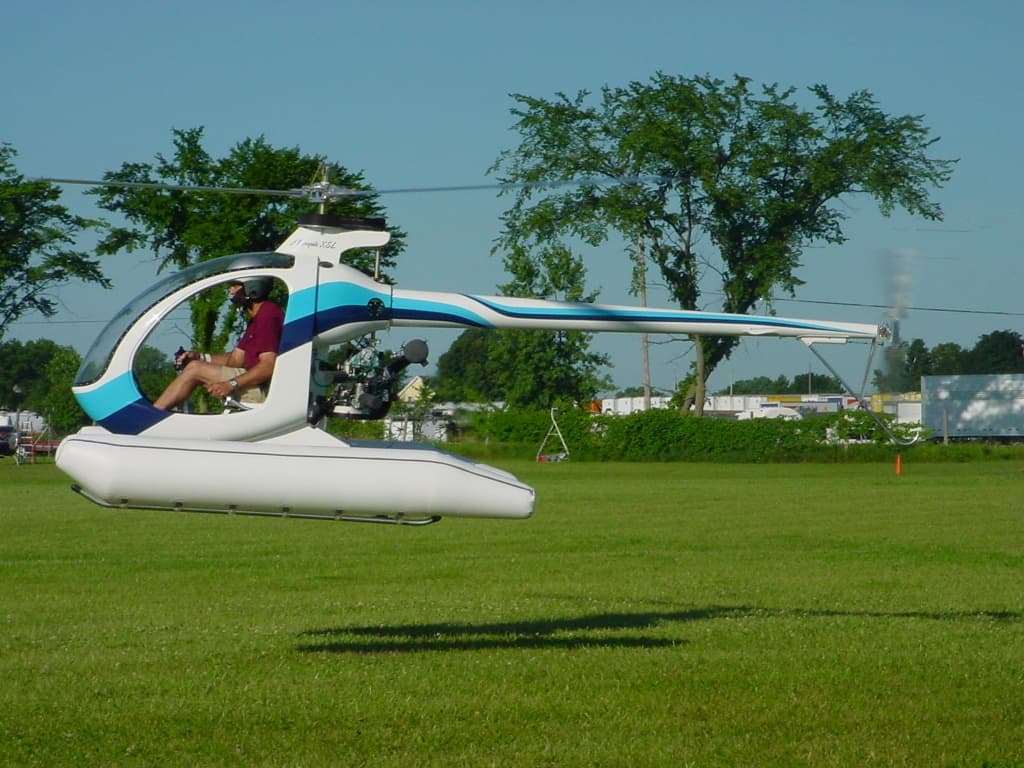
If you require more than a single seat, then the cheapest 2 seat helicopters start around $180,000 for a kit like the Safari 400 or if you wish to get a fully certified, factory-built helicopter with proven pedigree then a Robinson R22 Beta II will cost around $300,000 brand new, or you can find them from around $50,000 for a well-used machine with little time left on its components.
For a helicopter that you can take your family of four flying, then one of the world’s most popular helicopters, the Robinson R44 Raven II is a great option. You can get them brand new for $500,000 but there is always a tonne of them on the used market as people buy them and then decide it’s not for them.
Finding a good helicopter broker will allow you to get a great used R44 for practically half the cost of a new build. They are smooth, fast, affordable and have lots of great information on the running costs. For more information on the R44 check out the Robinson Helicopter Company’s website Here .
(Links to Manufacturer’s Websites)
Learn More … Try These Articles: * Can Anyone Build a Helicopter? Top 5 Kits * Learning To Fly Helicopters – Is it really that hard?
What is the World’s Most Expensive Helicopter?
The world’s most expensive civilian helicopter is also the world’s largest helicopter, the Russian Helicopters Mi-26T at $30M. The most expensive military helicopter is the Sikorsky CH-53K King Stallion used by the U.S. Marine Corps at $95M each.
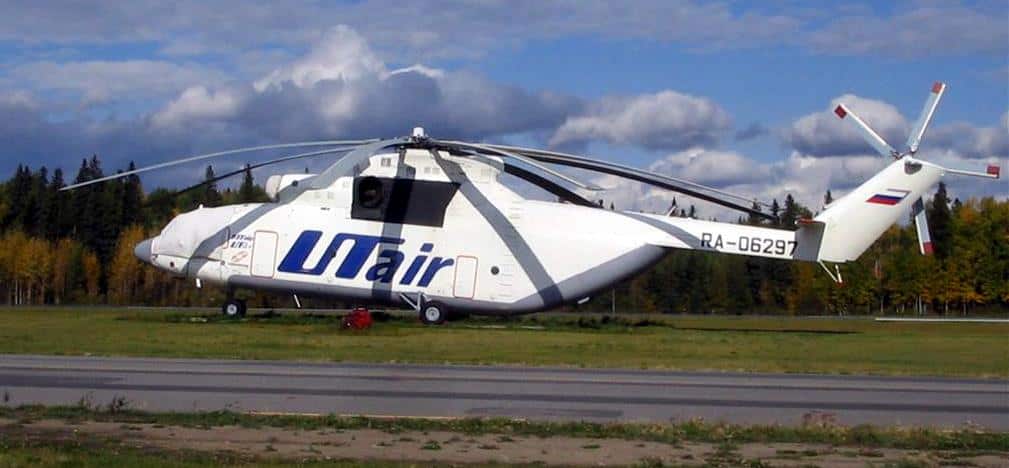
The Russian Helicopters Mi-26T is an absolute behemoth of the skies. Manly used in the commercial sector for construction and heavy-lift services this helicopter’s size matches its price tag. With a capacity to lift 20,000kg/44,000 lbs or carry 82 passengers and its 5 crew this helicopter is well worth its price tag!
The Sikorsky CH-53K King Stallion is the latest edition in the CH-53 bloodline from Sikorsky. This helicopter is also one of the biggest helicopters in the world but with updated avionics, engines, fuselage materials, and counter-measures this makes it the world’s most expensive military helicopter by a long margin.
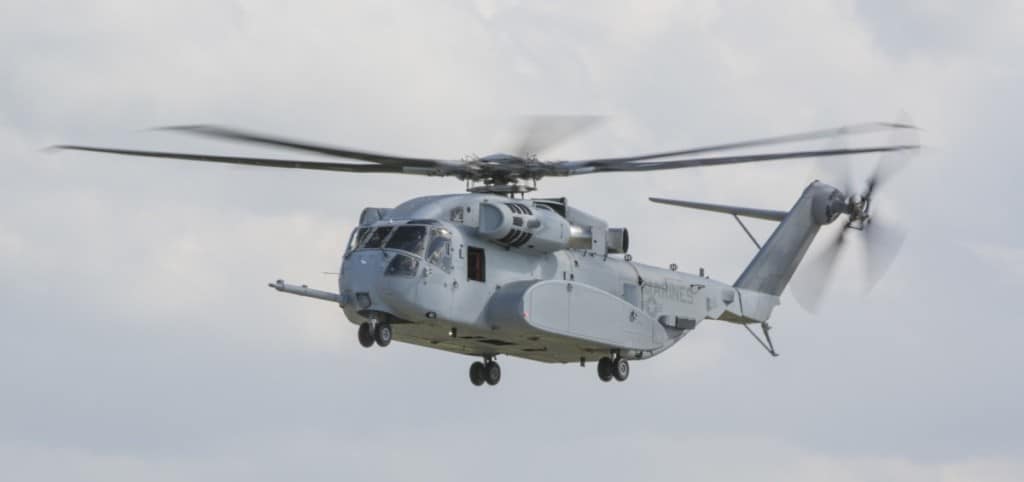
Used as a heavy-lift and troop-carrying vehicle this helicopter has been purposely tailored to the needs of the U.S. Marine Corps to provide the ultimate helicopter for the next 20 years of service
Is it Cheaper To Own an Airplane or a Helicopter?
When looking at the cost of similar-sized airplanes and helicopters an airplane will always be cheaper to buy and run. Airplanes contain fewer moving parts which reduces the initial build cost, maintenance costs, and insurance cost but need a runway on which to land & takeoff.
When budget is the main consideration for getting into the air an airplane is always cheaper. When flexibility on where to land is the main factor then a helicopter is the better option. Helicopters are always more expensive to buy, maintain and run when compared to an airplane but they serve two very different roles.
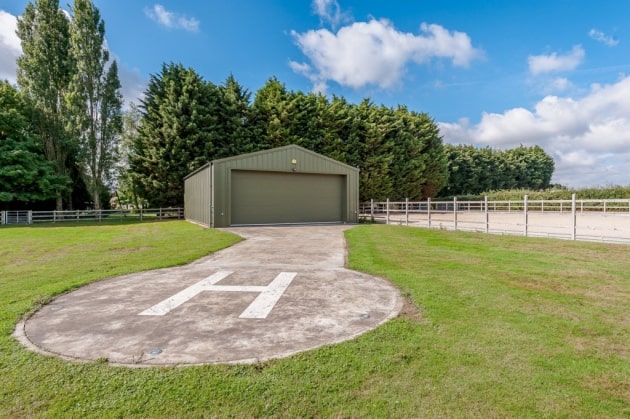
It is like trying to decide whether to buy a sports car or a motorcycle. They both get you from point A to point B but the mode of transport is totally different. Helicopters are a great vehicle if you wish to go between locations without runways and you can afford the additional cost.
If however, you wish to explore the country or commute via easily accessible airports then an airplane is a great alternative. When looking at buying an aircraft whether it be fixed wing or rotary wing, the use of a good broker can help find you a great aircraft for your budget, and sometimes that budget can be enough to allow to you choose between owning a plane or a helicopter, especially if it is used.
Learn More … Try These Articles: * How Much Do Aircraft Hangars Cost to Rent? * Is it Cheaper to Own an Airplane or a Helicopter?

I am an aviation nut! I'm an ATP-rated helicopter pilot & former flight instructor with over 3500 hours spanning 3 countries and many different flying jobs. I love aviation and everything about it. I use these articles to pass on cool facts and information to you whether you are a pilot or just love aviation too! If you want to know more about me, just click on my picture!
Recent Posts
How Do Airports Get Their Name?
Airports get assigned their names based on a worldwide international standard. They are assigned a 4-letter code for aviation use but the airport property is often called a more passenger-friendly...
Can Airplane Windows Break?
Airplane windows can and do break. Incidents with airplane windows breaking are really common and can be dealt with relatively easily as long as the aircraft is below 10,000 feet where pressurization...
- (800) 326-3356
- Covid-19 Cleanliness Standards

Family Company
All of the people who work with Safari are “ohana” (Hawaiian for family). OK – we’re not all blood-relatives but our team approach is a core Safari value.
Safety First
Safe, smooth and level is our motto. We have a long term reputation and commitment to the highest safety standards for pilots, equipment and practices.
Trusted & Experienced
All Safari pilots are carefully recruited for experience, and all exceed FAA requirements
Our Choppers
From our aircraft to numerous industry innovations, Safari has always been at the leading edge of Hawaii Aviation. Safari’s “super” ASTAR 350 B2-7 features a left side pilot seat, more passenger leg room, and higher visibility with large side “mega windows” (on Kauai) and “picture windows” (on the Big Island). The exclusive “Safari Skylight” window (Kauai only) provides front and back-seat passengers a tremendous vertical overhead view for gawking at those amazing waterfalls.
Helicopter Innovations and Safari “Firsts”
Company founder.
PRESTON S. MYERS – President
A Naval Aviator and retired from the Naval Reserves as a Commander (0-5). Started flying in college at the age of 19 at Mt. San Antonio College in Walnut, California and graduated in 1965 with a degree in Aviation Management. Joined Navy as Naval Aviation Cadet (NAVCAD) and earned his wings and commission in April 1967. After flight school was sent to Naval Justice School, Newport, Rhode Island and attended courses for Squadron Legal Officer.
First duty assignment was with Fleet Composite Squadron Five (VC-5), Naha, Okinawa flying H-34s and S-2. The primary mission of VC-5 was to provide target and drone services for the United States and foreign navies. These services included target tows with the S-2 and BQM 34 drone recoveries from White Beach and Naha. He was also deployed throughout Asia providing target services to SEATO operations and the Japanese Navy. Occasionally, services were provided to HMS Hermes of the Royal British Navy. A deployment included NAS Cubi Point, Philippines; Tinan, Taiwan; Thailand; Kanoya, MCAS Iwakuni and NAS Atsugi, Japan and was TAD to COMSEVENTHFLT DET C in Saigon, South Vietnam during the TET Offensive.
As a civilian, he was employed with Air America based in Udorn, Thailand providing quasi-military support for the United States. He flew in Thailand, Laos, Cambodia, and South Vietnam. U.S Contracts included U.S. Airforce, U.S. Embassy, USAID, Central Intelligence Agency and the ICCS, the peacekeeping organization assigned to South Vietnam after all U.S. troops were removed. He flew the H-34, H-47C Chinook and the Bell 204B and H-1 helicopters.
After Air America, he relocated to Singapore where he flew extensively throughout Indonesia n East Borneo and Irian Jaya (old Dutch New Guinea) on offshore rigs and drilling ships that included ship to ship supply support including cargo, external and internal loads and personnel crew changes supporting oil exploration contracts. In addition, he participated in Heli-Rig movements slinging oilrigs piece by piece from one drill location to another under his helicopter. He flew the Sikorsky S-58T and Bell 205 A-1.
After his employment in SE Asia, he was affiliated with the U.S. Naval Reserves in San Diego, California where he was assigned as Executive (XO) and Maintenance Officer for HC-194, a logistical support helicopter squadron based at NAS North Island. The squadron provided support staff and personnel for HC-9, the only Combat Search and Rescue Squadron in the Navy and he flew the Sikorsky HH-3A helicopter. Upon relocation to Hawaii, he was assigned to COMUSNAVCENT and participated in “back-fill” operations at Pearl Harbor during the Gulf War. He was also Commanding Officer (CO) for NR ABFC MMF DELTA providing mobile maintenance service for the P-3 Orion squadrons when deployed on combat missions throughout the world.
He started Safari Aviation, Inc dba Safari Helicopters first on Kauai and after Hurricane Iniki, in Hilo, Hawaii operating the Eurocopter AS350 B2 helicopter with air conditioned comfort and flight smoothness no other helicopter in Hawaii can provide.
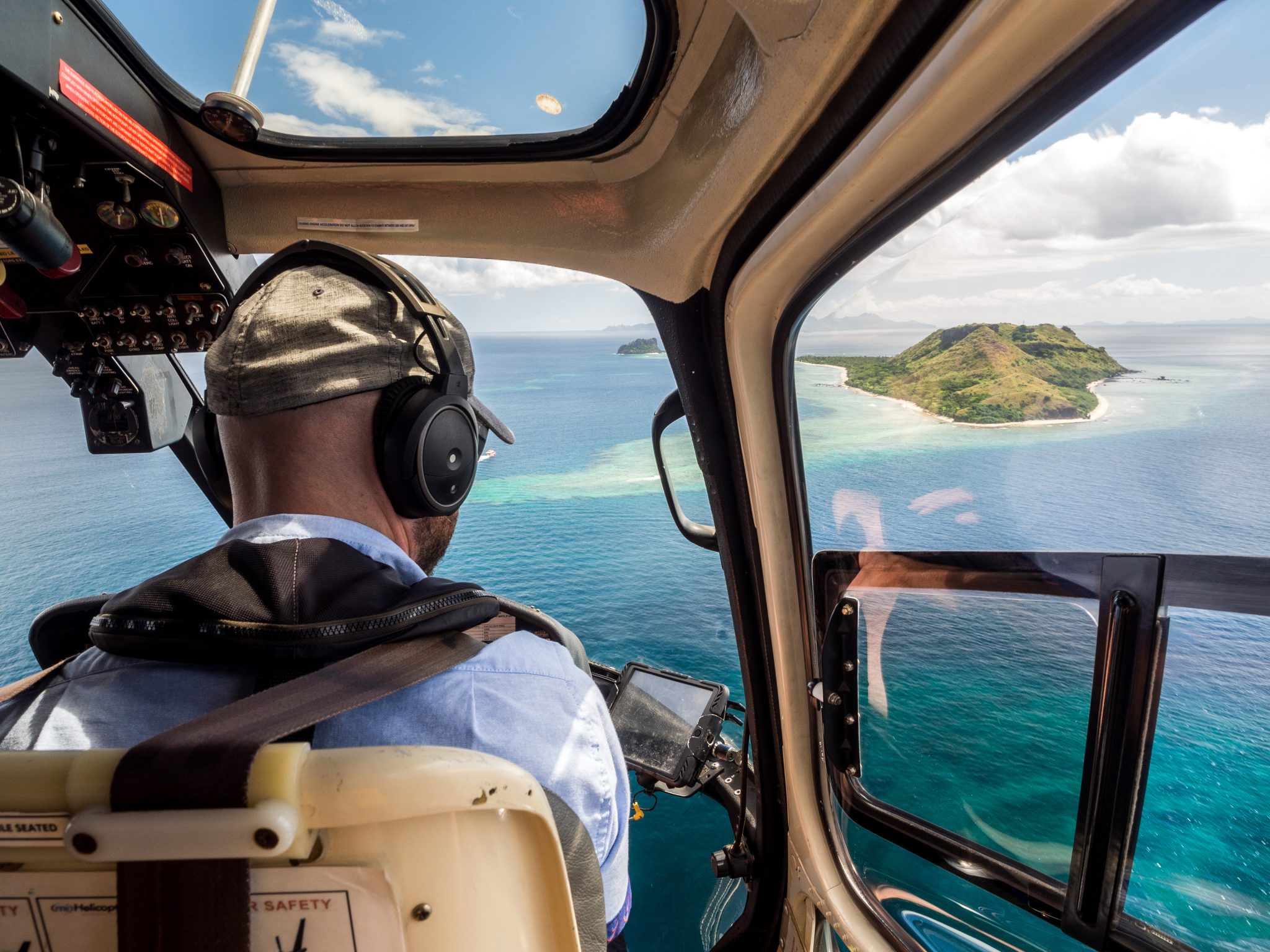
TOP RATED TRIP ADVISOR

TOP 5 HELICOPTER TOUR IN HAWAII MAGAZINE
From Hawaii Magazine , we were rated as one of the top 5 helicopter tour companies on Kauai.
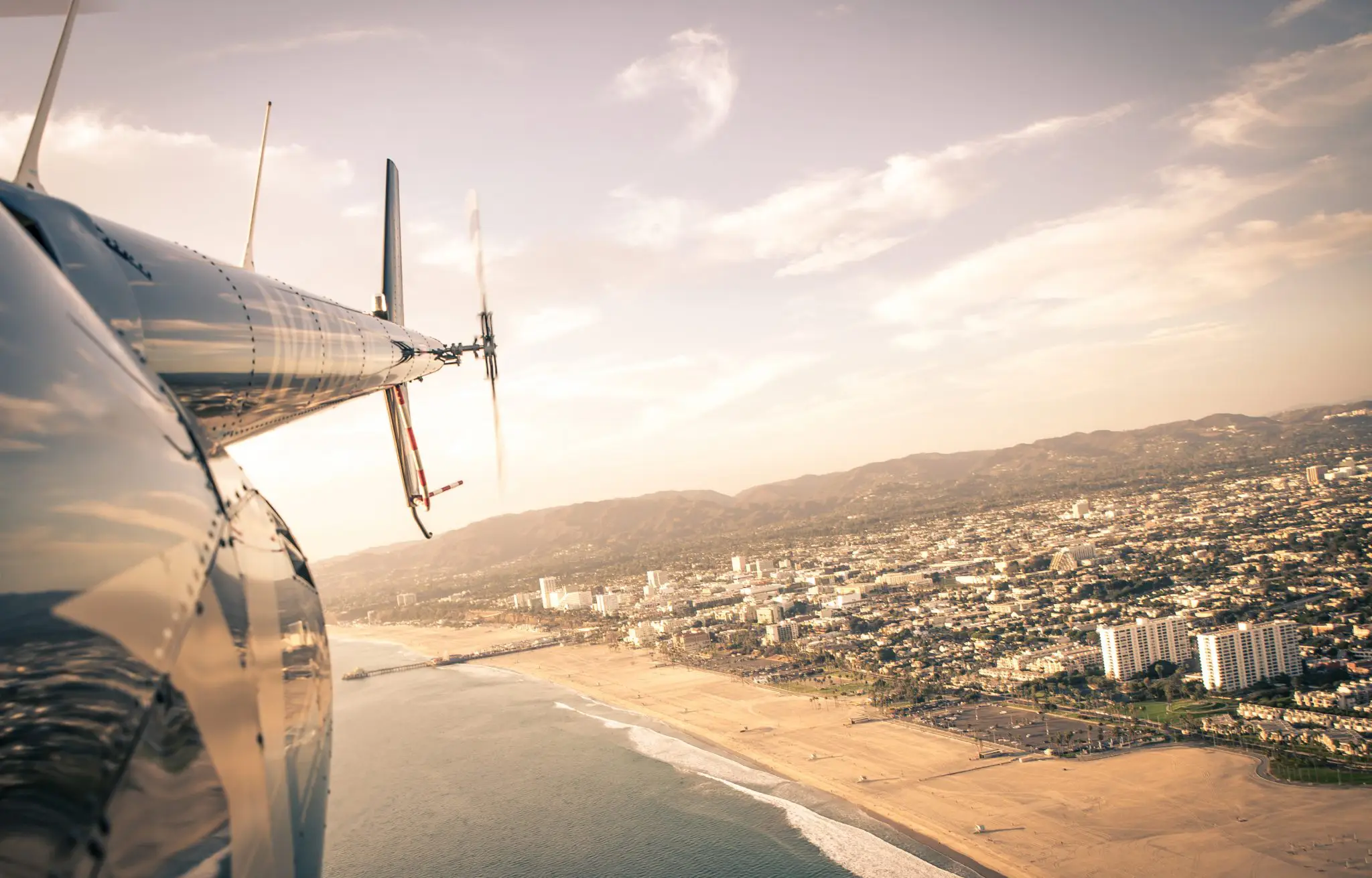
BEST RATES ON THE ISLAND
36+ years of experience.

What are you waiting for? Let's go fly!

- (800)326-3356

- FAQ’s
- Privacy Policy
- Terms and Conditions

IMAGES
VIDEO
COMMENTS
Safari brings the quality of certified to the price point of experimental. The classic simplicity of the Safari 400 or the sleek lines of the new Safari 500? Whichever you choose, your new Safari will be powered by a real aircraft engine and the proven quality of the Safari drive train and controls. Safari 400 Helicopter. CAN I GET MY.
SAFARI 500 experimental helicopter kits start at $154,700. Licensed and experienced builders. Call Us 1-850-482-4141 Follow Us on Facebook Subscribe to Us on Youtube Follow Us on Instagram . Menu. Home; Why SAFARI? The Company; Compare The Safari; Hourly Maintenance Costs; Specifications; Building A Safari Helicopter; Buy a SAFARI. SAFARI 400 ...
The full cost of the kit is $142,800 USD or you have the option of buying a fully built, turn key Safari 400 for $183,200 USD. The chance to save $40,000 is highly tempting of course and most Safaris are kit built as a result. Safari Helicopters offers two models in their line up, the 400 and the 500. The 500 is a little larger and more ...
Buy A SAFARI 400 Complete Kit! SAFARI 400 Complete Kit Includes Everything You NeedNothing Else To Buy! To buy a flight ready SAFARI 400 call us 1-850-482-4141 or email us at [email protected] CONTACT US TODAY TO START MAKING YOUR PERSONAL HELICOPTER DREAMS A REALITY! SAFARI 400 Complete Kit IO-360 Lycoming Engine Fabricated and Powder Coated…
Safari 600 Specifications and Performance. Powered by a Lycoming O-360, the standard factory Safari 400 will cruise at 74kts, with a VNE of 87kts or 100mph. A typical ship weighs around 1000lbs empty and with a MAUW of 1650lbs, useful load is in the order of 650lbs.
SAFARI 400 Flight Ready Helicopter. If you do not have the time or inclination to build a Safari for yourself, let us custom build the helicopter of your dreams! Starting with the "ingredients" of the SAFARI kit, a Flight Ready SAFARI can be customized to your specifications including paint, interior, engine, avionics and accessories to ...
3225 Akahi St, Lihue, HI 96766. 800-326-3356. Contact Us. What are you waiting for? Let's go fly! Contact. Safari Helicopters Offers Big Island & Kauai Helicopter Tours. Enjoy The Beautiful Waterfalls & Volcanoes from the Sky! Save Big When You Book Direct.
The Safari is powered by a Lycoming (or clone) that runs at 2750 RPM which is reduced by the transmission to 500 RPM at the main rotor. A nice feature for a helicopter in this class is a main rotor governor (a stepper motor that adjusts the throttle position to keep the main rotor speed constant. Big news for Safari Helicopters is the ...
UNKNOWN. Condition. Used. Registration #. HB-YNP. Description. LOW TIME SAFARI 400 FOR SALE • $145,000 • AVAILABLE FOR SALE • LOW HRS SAFARI 400 HELICOPTER FOR SALE FUSELAGE TT SINCE NEW: 80 Engine TT SINCE NEW: 80 KIT AGE: 2008 ENGINE: Lycoming O360 J2A GOVERNOR: R22 IGNITION: Magneto INSTRUMENTS: Analog AVIONICS: TRIG TT21 S MODE ...
The Safari 400 kit costs $142,800, and the company is offering the Safari 500 for the same price at the fly-in, but "after the show it's going up considerably." For the next phase of expansion, the Georgia company is "looking for full-service dealers knowledgeable about helicopters [that are] not only willing to sell, but support them ...
Safari Helicopters Safari 400: 2: $152,000: $130,000 - $155,000: Robinson Helicopters Company Robinson R22 Beta II: 2: $318,000: $50,000 - $300,000: Hélicoptères Guimbal Cabri G2: 2: ... The cumulative cost for these parts and the availability of the helicopter type dictate the purchase cost of a used helicopter.
SAFARI 400. PK2102. N369T. Used. 2014 SAFARI 400 HELICOPTER • $94,400 • FOR SALE • 2014 Safari 400 Helicopter. Hobbs 244, TTAF 244, TTSN 244 , Garmin GNC 250 XL Radio, Garmin GTX 320A Transponder, also has ADS-B . Dual 14 gallon fuel tanks, The Helicoper is serviced regulary by certified A&P . Powered by 0360 fuel injected engine, Tons of ...
The volcanic activity of the Hawaiian hot spot continues today on the Big Island at Kiluaea Volcano, and the East Rift Zone. Safari Helicopters tours survey the diverse array of volcanic formations throughout the whole area where this activity has recently occurred and also where it is happening right now! The aptly named Chain of Craters Road ...
Safari Kit Helicopter at Sun-N-Fun 2013. Safari 500. Safari Helicopter is an American kit aircraft manufacturer located in Hendersonville, Tennessee . The company was originally known as Canadian Home Rotors and then Safari Helicopter and was founded in Ear Falls, Ontario, Canada. It was purchased by the Marianna, Florida-based company CHR ...
Experience the view from above in the comfort of a state-of-the-art helicopter in this approximately 60 minute tour covering over 100 miles of amazing Kauai scenery where scores of Hollywood directors have tried to capture its unmatched beauty. Aprox. 55 Minute Tour. Na Pali, Waimea Canyon, Waialeale. Private Tour: $1,500 (Better price per seat)
Helicopter Innovations and Safari "Firsts". First in Hawaii to fly the extremely powerful and technically advanced A-STAR 350 B2-7 helicopter, one of the most luxurious and expensive helicopters touring Hawaii's beautiful locations. "Safari Skylights" and "Mega Windows" (Kauai only) ensure there are no physical obstructions that ...
The following Safari Helicopter kit prices were provided by the manufacturer and are not guaranteed to be current. Further inquiries should be directed to the manufacturer. Standard Kit $74,400. Bubble Kit. Welded Fuselage & Tailboom.
General. 2021. SAFARI HELICOPTER. SAFARI 400. Used. New, ready for shipping and final assembly comes with all major parts to finish machine. 180 HP Lycoming. Titanium tail rotor, painted and balanced rotor blades, all instrumentation, fully wired, high flow stainless exhaust. Contact Brian 0429 918 312 for more information and photos.
Official Safari Helicopter, Lafayette. 6,878 likes · 1 talking about this · 139 were here. Home Base of Safari Helicopter...
Description. 2010 Safari Helicopter 400 hrs. TTAFSN in excellent condition. 400 Head, Composite blades, titanium tail rotor blades, governor, electric trim, doors & heater. Annual 5/20, Garmin Com, Bendix transponder, ifly GPS, and ADSB out.